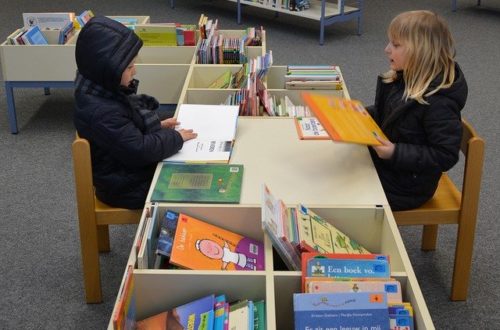Permit me to ask a disturbing question: Why are we teaching our children to read as though English is not their first language?
I have been a world language teacher for more than a decade at one of the more prestigious public high schools in the nation. Oddly enough, teaching students a second language gives me an interesting window into their first; but allow me to start at the beginning of my teaching adventure. I was a mid-life career changer who completed a master’s degree at New York University. My plan was to parlay my fluency in French into a high school teaching gig. However, when I entered their degree program, NYU convinced me to get a double degree in ESL and French.
The double degree was not only a sound investment (making me more marketable) but also a logical compliment to my studies. Clearly the strategies used to teach French can easily be switched into English in order to teach ELLs (“English Language Learners”). I enjoyed taking some linguistics classes, as well as studying French and English grammar more intensely. But unfortunately, the bulk of my classes were in pedagogical theory. I took a deep dive into the classics of educational theory such as Freire, Piaget, Dewey, Bloom, Gardner and of course everyone’s favorite Soviet era scientist, Vygotsky. Unfortunately, the canon was driven by 20th century psychologists, and totally ignored 21st century cognitive scientists who study the science of reading. Consequently, we never once learned how phonics could be incorporated into lessons. Clearly NYU felt the best use of my time would be to sit in group projects, as it was the driving force behind their teaching philosophy, and believe me, I did tons of them. We wrote lessons, reflected about them, and when we presented in groups, we were grilled as to whether we were “scaffolding student learning” appropriately.
Allow me to explain, a good ELL or world language teacher takes someone with limited vocabulary, and gives them enough scaffolding—be it with visuals, vocabulary aids, graphic organizers etc.—to make a student “feel” like they communicate in the target language at a higher level than they possible could on their own. In fact, it is breathtaking to watch a great language teacher work the classroom in such a manner—eliciting fluent speech from hesitant language learners.
So clearly, I bought into the idea of “scaffolding” in the foreign language classroom, and I still do. However, every time I learned a new technique, I would hear the same caveat repeated over and over: Teachers! Don’t forget that you can also use these same scaffolding techniques in regular English classes too – especially Middle School. The more you scaffold with visuals… the more your students will learn. I always bristled at the idea of taking these techniques into mainstream classrooms. Clearly English speakers have no need of scaffolding to express themselves in their native language. They already have the vocabulary. Why would they possibly need visuals to express what they already know? Why not focus on text in a Middle School English class?
The moment this really it hit me was the day I came face to face with a graphic organizer in the shape of a hamburger. At the time I was student teaching in New York’s Chinatown, and taking pedagogy classes at night. My days consisted of working with newly arrived elementary school students from Fujian province. It was apparent to me that these young children were in culture shock, as they were far from their extended families and plunked down in the middle of New York City. If that wasn’t stressful enough, they had to cope with teachers like me who spoke to them in an unfamiliar language. The only guidance I was given from my cooperating teacher was to sit with them, show them picture books and try to get them to read with me, no phonics—just pointing at pictures and trying to get them to say the words. She informed me that many were in their “silent period” and soon like magic they would start to read. The last student I worked with that day before heading off to NYU was a little girl who glowered at me while she refused to speak—clearly incensed at this woman who showed her picture books and babbled at her.
That evening I dutifully showed up to my class at NYU and was presented with a printout of a graphic organizer in the shape of a hamburger. Its function was to help students plan a three-paragraph essay—the top bun representing the first paragraph, the meat was the second, and the bottom bun… ok… I think you get it. Again, I was told that it was a great graphic organizer, not only for ESL students, but for Middle School students too. I was aghast, as my experience led me to believe neither populations would benefit from it. Would a new arrival from Fujian province get the warm fuzzies over a hamburger? Would it do anything to enhance their learning? How about a Middle School student in a mainstream school? Clearly there is a high probability that they know and love hamburgers, but is it a better choice than the roman numerals my own teachers used to plan an essay? Or was this hamburger simply a distraction from the text? I laughed and thought of the Magritte painting only this time Ceci n’est pas un hamburger.
Clearly the culture at large is moving to a more visual environment. People spend more time with their Instagram feeds than newspapers or magazines, but is that really a reason to move school instruction to the visual realm as well? While visuals are key to helping English language learners, are they really essential in a mainstream English class? Or are they simply a distraction from the difficult task of decoding text.
If you want proof of the educational system’s overriding emphasis on visuals, look at the textbooks of any high school student, and compare them to your own at that age. All textbooks are twice as big as they once were, and twice as bulky to accommodate larger pictures—I assure you this goes across all subject matter; and it explains far more than teenagers back problems.
But let’s go back to my little microcosm, the world of second language acquisition. If there is one thing NYU taught me, it was that literacy moves from the first language into the second. For example, if you arrived from Fujian province without having learned to read well in your first language, teaching you to read in English (or French for that matter) will be even more daunting than it would for a literate Chinese student making the transition.
I often think of this when I push my students to read in French because their resistance to text is palpable. French and English share many cognates; these cognates are usually 3-4 syllable words, and often my students seem confused by them, as though these words are a foreign language. But beyond vocabulary, the more frightening aspect is the dependency that has been created via an educational system that relies on intense scaffolding. Often when I check for comprehension during readings they ignore the text that is right in front of them, and use strategies more akin to an ESL students such as looking at pictures or inventing answers out of thin air, and perhaps waiting for some warm, comforting familiar image—like a hamburger.





